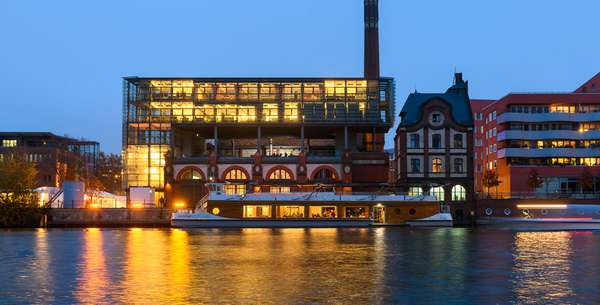Idea by
Dasha Tsapenko + Nazar Gresko
Call for ideas 2019
Domestic constructs of making out
Domestic constructs of making out

- New alliances
Domestic spaces are one of the main hosts for romantic relationships. Elements within these spaces become proactive actors that shape/are being shaped by embodied parts of a specific relationship.
The notion of love has changed in a fast-changing media, which impacts relationships in the long term.
This research aims to analyze how the architectonics of specific domestic elements: wall, door, window, roof, stairs, corridor and elevator, as well as their mediated images that shape a construct, choreograph the embodied components of romantic behavior.
By collecting samples of romanticised spatial elements within various media and analyzing them through different filters, the collective knowledge of cumulative social perception is formed. When superimposed with the bodily language specific to love patterns, natural or socially constructed, a speculative scenario is drawn.
Love as a natural desire, a delusion and a social construct is observed via domestic framework.
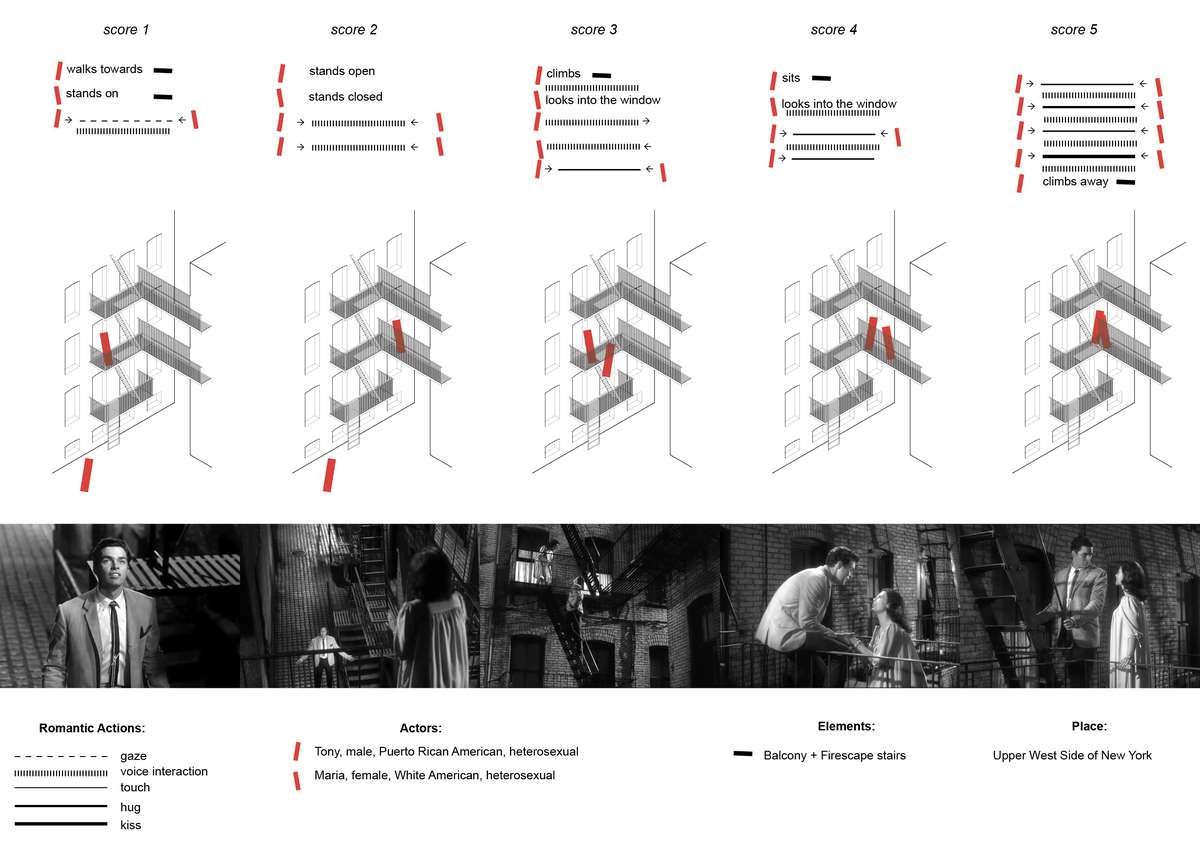
One of research analyses. A case study of tracing the points of interaction between the relationship participants of the “West Side story” and the architectural element involved - the balcony.
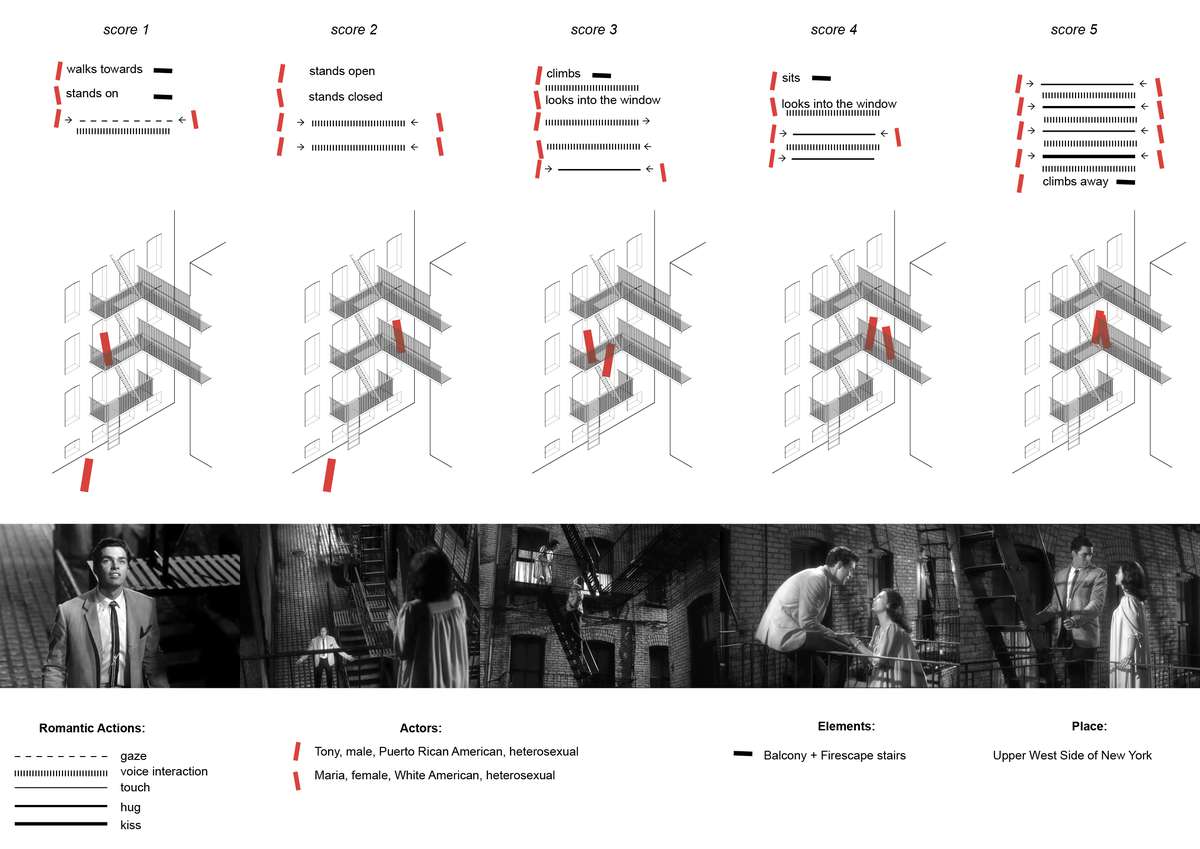
One of research analyses. A case study of tracing the points of interaction between the relationship participants of the "West Side story" and the architectural element involved - the balcony.
Domestic constructs of making out
Domestic constructs of making out

- New alliances
Domestic spaces are one of the main hosts for romantic relationships. Elements within these spaces become proactive actors that shape/are being shaped by embodied parts of a specific relationship.
The notion of love has changed in a fast-changing media, which impacts relationships in the long term.
This research aims to analyze how the architectonics of specific domestic elements: wall, door, window, roof, stairs, corridor and elevator, as well as their mediated images that shape a construct, choreograph the embodied components of romantic behavior.
By collecting samples of romanticised spatial elements within various media and analyzing them through different filters, the collective knowledge of cumulative social perception is formed. When superimposed with the bodily language specific to love patterns, natural or socially constructed, a speculative scenario is drawn.
Love as a natural desire, a delusion and a social construct is observed via domestic framework.
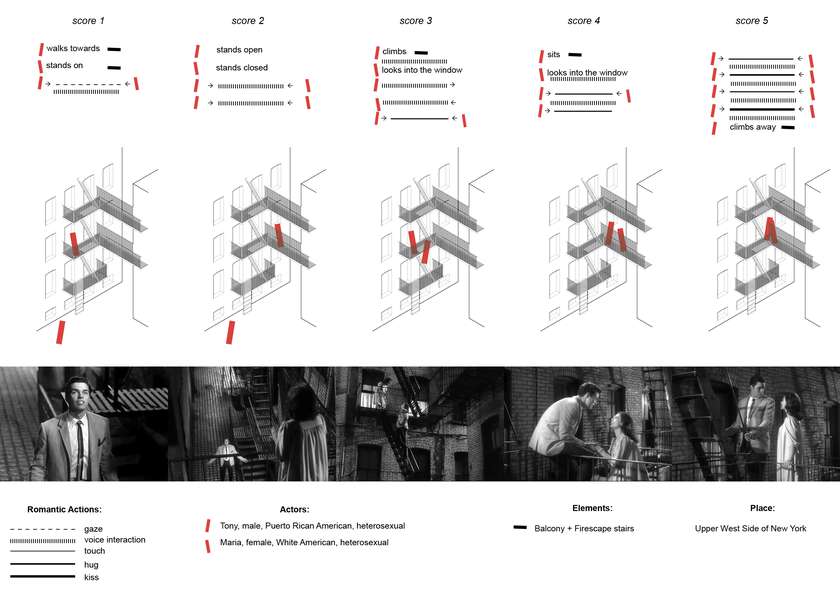
One of research analyses. A case study of tracing the points of interaction between the relationship participants of the “West Side story” and the architectural element involved - the balcony.
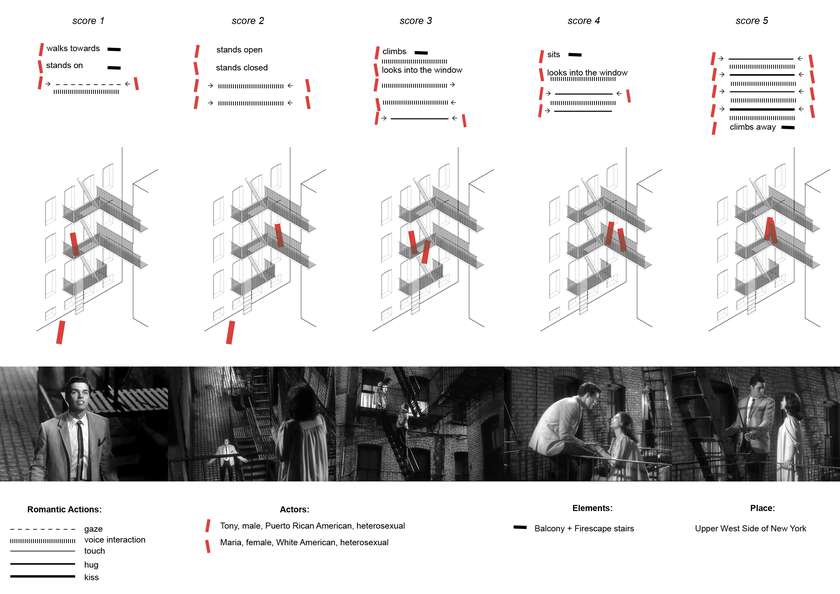
One of research analyses. A case study of tracing the points of interaction between the relationship participants of the "West Side story" and the architectural element involved - the balcony.
